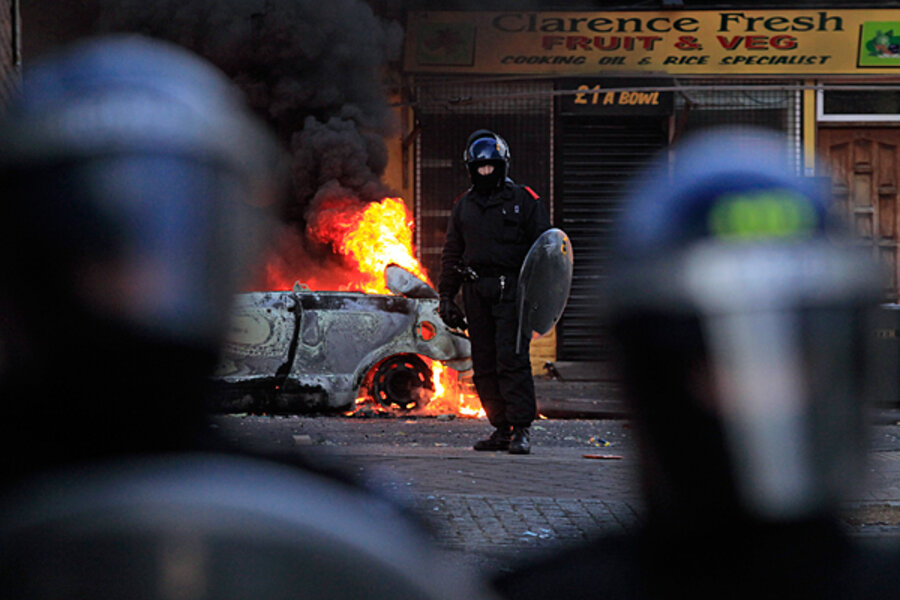The catalyst for the riots was the death of Mark Duggan, who was shot by police in Tottenham – a district in north London where race riots erupted in 1985.
Many of the details about why Mr. Duggan became involved in a clash with police and what happened are fuzzy, the Guardian reports. What is known is that Duggan grew up in Tottenham and was on his way home in a cab on Thursday night when police approached him. Initial reports suggested that Duggan shot first, hitting a police radio, but later reports said that the bullet lodged in the radio was a police-issued bullet.
Reports indicate that Duggan may have been linked to the local Star Gang and to other north London gangs, according to a Guardian profile. He was under investigation by a police unit that oversees gun crimes in the black community.
However, his relatives denied that Duggan – a father of three – was involved in gangs and said he was a family man who would not have shot at police.





